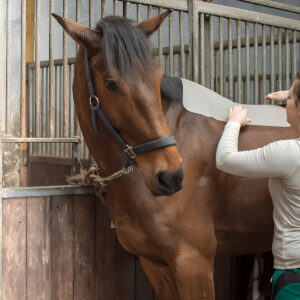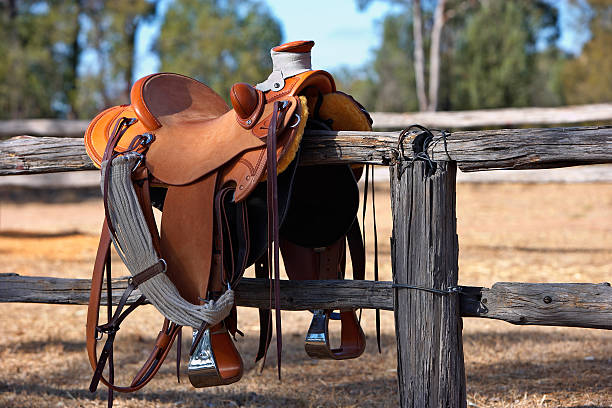Saddle Cushion for Horses: The Ultimate Guide for Equine Comfort and Performance
A well-fitting saddle is necessary for horse comfort and performance, but even the best saddle benefits from the right cushioning. Horse saddle cushions are specially designed pads meant to improve comfort, protect the horse’s back, and enhance the overall riding experience. In this guide, we will cover everything you need to know about saddle cushions, including varieties and benefits to both horse and rider.

What Are Saddle Cushions for Horses?
Saddle cushions, also known as saddle pads, are specialized padding positioned between the horse’s back and the saddle. Their purpose is manifold: they help distribute the rider’s weight more evenly, absorb shocks on the horse’s back when riding, help to eliminate rubbing of the horse’s coat, and correct small saddle fitting issues. A good quality saddle cushion serves as an essential piece of equipment that prevents back pain and soreness in your equine partner while enhancing the joy of riding for you.
Research in equine biomechanics indicates that proper cushioning can reduce pressure points on the horse’s back. Experiments suggest that just a few millimeters of the proper padding material placement can certainly affect pressure distribution and may well be the difference in preventing irreversible damage to your horse’s back muscles and spine.
Types of Saddle Cushions for Horses
Saddle cushions come in many varieties; each different from the other and good for a type of rider, horse conformation, or use. Understanding these differences will assist you to choose wisely for your equine partner.
Gel Saddle Cushions
Gel cushions use polymer technology to absorb shock and distribute pressure on the back of the horse. The semi-solid gel material dynamically responds to applied pressure, moving side-to-side to disperse the impact force away from the pressure points.

Key Features of Gel Cushions:
- Excellent shock absorption features
- Performance maintained in extreme temperatures (-40°F to 250°F)
- Strategically placed gel in high-pressure areas
- Lateral force dissipation that prevents pressure concentration
- Long lifespan exceeding many foam alternatives
Expert Tip: Gel cushions are particularly beneficial for horses with sensitive backs or those recovering from back injuries. They’re also excellent for high-impact disciplines like jumping or barrel racing.
Wool Saddle Cushions
Traditionally, people have used natural wool cushions over time. And rightly so. Temperature regulation, moisture wicking, and natural shock absorption are the excellent features of wool.
Benefits of Wool Cushions:
- Superior breathability and moisture management
- Natural temperature regulation (warm in winter, cool in summer)
- Compresses over time to conform to your horse’s back
- Environmentally friendly and sustainable material option
- Available in various thickness options for different needs
In particular for Western riding, pure wool felt pads are very popular, while wool blend pads are acceptable across the disciplines. The density of the wool affects the pad’s cushioning as well as the longevity of the pad.
Foam and Memory Foam Cushions
Modern foam technology has created lightweight and efficient cushioning mediums that combine comfort and technical performance. Specifically, memory foam molds to your horse’s unique back shape.
Characteristics of Foam Cushions:
- Construction that is lighter weight than that of conventional materials
- Memory foam kinds that shape themselves according to the back of your horse
- In most cases combined to other materials for additional performance
- Of open-cell configuration for good breathability
- Various densities will be available for different support levels.
Sheepskin Saddle Cushions
Natural sheepskin has the added ability of offering comfort, as well as having its softness provide excellent friction reduction and breathability. These expensive cushions are often quoted as half-pads in English saddles, or as a topping for western pads.

Advantages of Sheepskin Cushions:
- Exceptional friction reduction properties
- Outstanding breathability and moisture management
- Natural temperature regulation
- Gentle against sensitive skin
- Premium aesthetic appearance
Benefits of Using Saddle Cushions
The right saddle cushion provides numerous advantages for both horse and rider. Understanding these benefits helps explain why quality cushioning is considered essential by experienced equestrians.
Benefits for Horses
- Pressure Distribution: Evenly spreads rider weight across a larger surface area
- Impact Absorption: Reduces concussive forces during riding
- Friction Reduction: Minimizes rubbing that can cause hair loss or sores
- Temperature Regulation: Quality materials help manage heat and moisture
- Minor Fit Compensation: Helps bridge small gaps in saddle fit
- Spine Protection: Provides clearance for sensitive vertebrae processes
Benefits for Riders
- Enhanced Stability: Reduces saddle slippage during riding
- Improved Comfort: Dampens vibration and impact for the rider
- Better Communication: More comfortable horse often means clearer responses
- Saddle Protection: Keeps sweat away from expensive saddle leather
- Extended Saddle Life: Reduces wear on saddle panels and trees
Important: While saddle cushions can compensate for minor fit issues, they should never be used as a solution for a fundamentally ill-fitting saddle. No amount of padding can fix a saddle that’s too narrow or that bridges significantly.
How to Choose the Right Saddle Cushion
Selecting the optimal saddle cushion requires consideration of your horse’s conformation, your riding discipline, and specific needs. Follow these guidelines to make an informed choice:
Horse Considerations
Your horse’s unique back shape and sensitivity should guide your selection process:
- High Withers: Choose pads with generous wither clearance or contoured designs
- Broad, Flat Back: Thicker, more substantial pads often work well
- Sensitive Skin: Natural materials like sheepskin or wool minimize irritation
- Back Problems: Specialized therapeutic options with targeted support
- Sweat Patterns: Consider breathability for horses that sweat heavily
Always check your horse’s back after riding for signs of pressure points, sweat patterns, or soreness to evaluate how well your cushion is performing.
Discipline-Specific Needs
Different riding disciplines create different demands on both horse and equipment:
| Riding Discipline | Recommended Cushion Type | Key Features to Look For |
|---|---|---|
| Trail Riding | Gel or Wool | Durability, breathability, moisture-wicking |
| Dressage | Wool or Sheepskin | Square shape, close contact, minimal bulk |
| Jumping | Gel or Memory Foam | Impact absorption, secure fit, contoured shape |
| Barrel Racing | Gel with Reinforcement | Anti-slip features, extra durability, rear support |
| Endurance | Wool-Blend or Gel | Exceptional breathability, lightweight, moisture control |
Pro Tip: For multi-discipline horses, consider having different saddle cushions for different activities. The right cushion for a dressage session might not be ideal for a long trail ride.
Thickness and Fit Considerations
The thickness of your saddle cushion directly impacts saddle fit and rider position:
- Thin Pads (¼”-½”): Maintain close contact, ideal for well-fitted saddles
- Medium Pads (½”-¾”): Balance protection and contact, most versatile
- Thick Pads (¾”-1″): Maximum protection but may alter saddle fit
Remember that adding padding changes your saddle’s effective tree width. If you switch from a thin pad to a thick gel pad, your saddle might feel narrower to your horse.
For more detailed information about saddle components and fit, check out this excellent guide to horse saddle parts that helps explain how cushioning interacts with saddle design.
Care and Maintenance of Saddle Cushions
Proper care extends the life of your saddle cushion and ensures it continues to perform optimally. Follow these guidelines based on cushion material:
Cleaning Guidelines
For Gel Cushions:
- Brush off debris after each use
- Spot clean with gentle soap and water
- Rinse thoroughly without soaking
- Air dry completely away from direct heat
- Never machine wash or tumble dry
For Wool Cushions:
- Brush daily to remove hair and dirt
- Periodically use a wool-safe detergent for deeper cleaning
- Air dry thoroughly to prevent mildew
- Use a wool-specific brush to restore loft
For Sheepskin Cushions:
- Brush gently after each use
- Clean with specialized sheepskin shampoo when needed
- Rinse thoroughly without soaking the backing
- Air dry away from direct sunlight
- Use a sheepskin brush to prevent matting
Storage Recommendations
Proper storage between rides helps maintain your cushion’s shape and integrity:
- Store flat or hung on a wide, supportive rack
- Keep in a dry, well-ventilated area
- Avoid folding which can create permanent creases
- Protect from dust with breathable covers
- Never stack heavy objects on top of cushions

Common Problems and Solutions
Even with the best saddle cushions, issues can arise. Here are some common problems and their solutions:
| Problem | Possible Causes | Solutions |
|---|---|---|
| Slipping Saddle | Smooth pad material, incorrect girth placement | Use non-slip pad, check girth position, consider contoured pad |
| Excessive Sweating | Poor breathability, synthetic materials | Switch to natural fibers, use moisture-wicking designs |
| Uneven Wear | Saddle fit issues, unbalanced riding | Consult saddle fitter, evaluate riding position |
| Rubs or Sores | Friction, dirt buildup, poor fit | Clean pad regularly, check fit, consider sheepskin |
| Compression Not Recovering | Aging materials, excessive weight | Replace pad, consider higher density options |
Frequently Asked Questions
Is it worth investing in an expensive saddle cushion?
A good quality saddle cushion means good investment in horse comfort and back health. High-quality saddle cushions mean they are made of premium materials with construction that usually provides better pressure distribution, longer lifetime, and enhanced performance. While budget options may cause some initial economy, they really may compress soon or unevenly or often cause more problems than it solves. When you put it into prospective, the cost of veterinary treatment for back pain is much greater than spending on preventive equipment.
How often should I replace my saddle cushion?
The lifespan of a saddle cushion varies by material, quality, and use frequency. As a general guideline:
- Gel cushions: 3-5 years with proper care
- Quality wool pads: 2-4 years depending on density
- Foam pads: 1-3 years before compression becomes problematic
- Sheepskin: 2-3 years before significant flattening
Watch for signs that replacement is needed: slow rebound after compression, visible permanent compression lines, uneven thickness, or your horse showing signs of discomfort.
Can saddle cushions help horses with back problems?
There must be some therapy and all saddle cushions that give contour comfort to the back of any horse with some relevant condition will help these horses. These specially developed therapeutic cushions with intelligent support zones reduce pressure exerted on painful sites in horses affected with kissing spines, swayback, or muscle atrophy. With regard to management of diagnosed back problems, there are so many factors involved, and the cushion you choose is just one of them; always collaborate with your veterinarian and equine bodywork specialist.
Do gel cushions make horses too hot in summer?
Contemporary gel cushion designs integrate ventilation into the heat problems they address, such as wicking materials or breathable fabrics; many have channels through or perforated holes that encourage airflow actively. Although earlier generations of gel products sometimes trapped heat, current models do typically perform well in warm weather. In very hot climates, look for gel pads designed with special ventilation features.
What saddle cushion keeps a horse coolest in hot weather?
Research in equine thermoregulation has indicated that, generally, wool cushions provide the best natural temperature control in hot weather, often more than 100%. It might seem paradoxical to some, but the unique fiber structure of wool actually does wick moisture away from the horse’s skin, creating an evaporative cooling effect. Look for open-weave wool designs that maximizes this property. Technical mesh pads with moisture-wicking capabilities do equally well under such extreme heat conditions.
Warnings and Precautions
Not a Substitute for Proper Saddle Fit
The finest cushion in the world will not justly compensate for a fundamentally poorly fitting saddle. Even if the best cushioning can “make work” a saddle that pinches, bridges, or sits unevenly, adverse long-term implication may result in your horse’s back muscles, nerves, and even skeletal structure. Correct the saddle first; add the proper cushion as a second step.
Watch for Signs of Discomfort
Always be alert for symptoms of back pain and discomfort in your horse: resistance to saddling, hollowing of the back when mounted, avoidance of freely moving, tail swishing when working, or changing behavior under saddle. Immediate attention to these signs will prevent some complications from becoming serious.
Proper Placement is Critical
When saddle cushions are poorly positioned, they may lose all their benefits and, conversely, may create new pressure points. Always make sure that the pad is properly centered, with the spine channel, if there is one, exactly over the horse’s spine and any contour features aligned properly with your horse’s anatomy.
Conclusion: Prioritizing Your Horse’s Comfort
Choosing the right saddle cushion is a huge step toward bringing the horse into comfort and performance and securing the horse’s long-term back health. Knowing the different types, their pros and cons, and how to use and care for them will help you make more prudent decisions that will be advantageous for both yourself and your horse.
Each horse is unique; what may be perfect for one may not be perfect for the other. Take time to watch how your horse feels about various cushions and consult others when you feel it is warranted. Ultimately, choose the path that most furthers the partnership of you and your horse.
Whether it is to remedy a particular back sensitivity problem, to account for seasonal changes in the horse’s topline, or for the loveable purpose of developing the best experience you can offer for the two of you, saddle cushion technology, in any form, has really good advantages that deserve serious consideration.
Comfort grants happiness, and happy horses offer rides worth living for.


